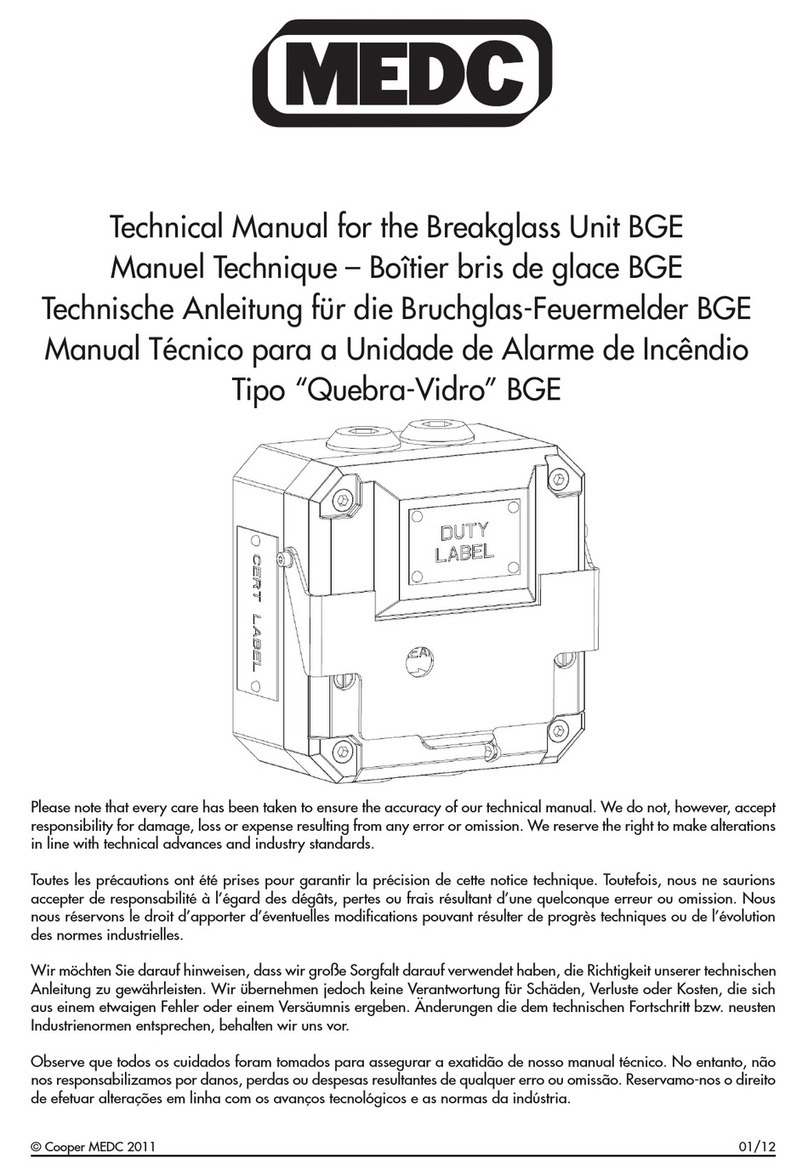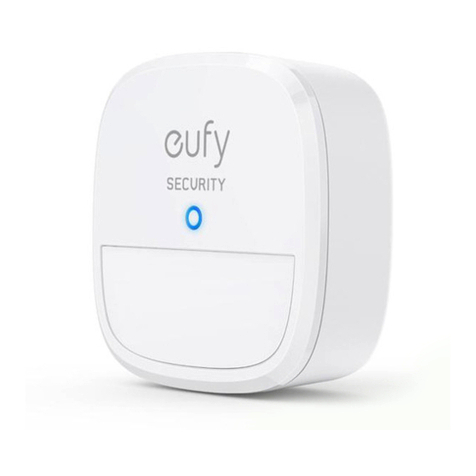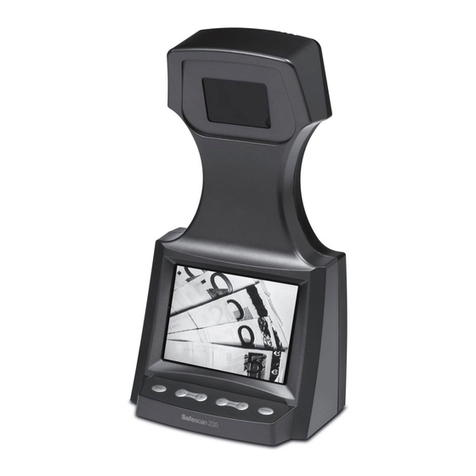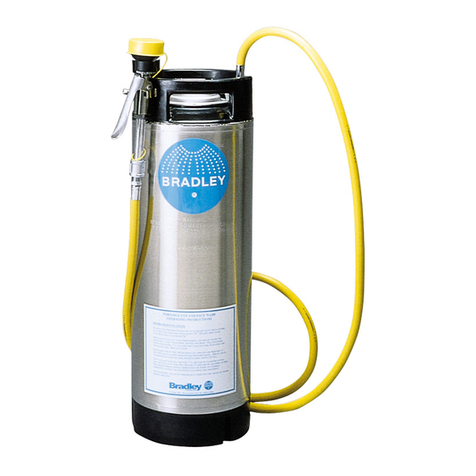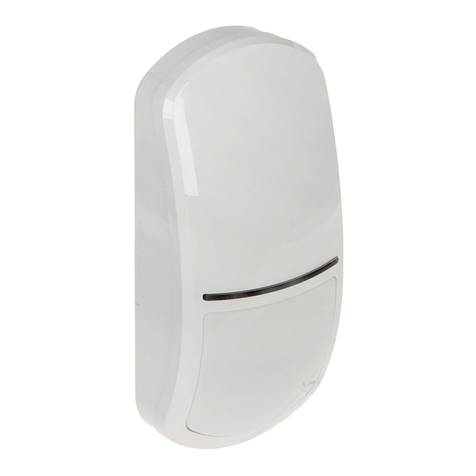SimpleSafe SSCO3-0 User manual

SimpliSafe CO Detector v3-0 Owners Manual (Revision UK1) — April 2021
1
Carbon Monoxide Detector Manual (SSCO3-0)
This carbon monoxide alarm is designed to detect carbon
monoxide from ANY source of combustion. It is NOT designed to
detect smoke, fire, or any other gas.
WARNING: Carbon monoxide alarms are not smoke alarms. This
carbon monoxide alarm is not a substitute for installing and
maintaining an appropriate number of smoke alarms in your
home.
This CO alarm will not sense smoke, fire, or any poisonous gas
other than carbon monoxide even though carbon monoxide can
be generated by fire. For this reason you must install smoke
alarms to provide early warning of fire and to protect you and
your family from fire and its related hazards.
This appliance is not to be used, cleaned, or maintained by
persons (including children over 8) with reduced physical,
sensory or mental capabilities, or lack of experience and
knowledge, unless they are under supervision or have been
given instruction regarding safe use and understand the
hazards involved.
Children must not play with this appliance.
WARNING: This product is intended for use in ordinary
indoor locations of family living units. It is not designed to
measure compliance with Occupational Safety and Health
Administration (OSHA), commercial, or industrial standards. It
is not suitable for installation in hazardous locations as defined
in the National Electric Code.
The installation of this device should not be used as a
substitute for proper installation, use and maintenance of
fuel burning appliances, including appropriate ventilation and
exhaust systems. It does not prevent CO from occurring, nor
can it solve an existing CO problem.
WARNING: This device is designed to protect individuals from
acute eects of carbon monoxide exposure. It may not fully
safeguard individuals with specific medical conditions. If in
doubt, consult a medical practitioner. Individuals with medical
problems may consider using warning devices which provide
audible and visual signals for carbon monoxide concentrations
under 30 PPM.
This carbon monoxide alarm requires a continuous supply of
electrical power - it will not work without power.
This alarm has not been investigated for carbon monoxide
detection below 70 PPM.
CAUTION: This alarm will only indicate the presence of
carbon monoxide at the sensor. Carbon monoxide may
be present in other areas.
For any questions regarding your CO Detector, please
contact:
SimpliSafe, Inc
294 Washington St Floor 9
Boston MA 02108
Email: [email protected]
Website: www.simplisafe.com
Phone: 1-888-957-4675
WARNING!! Actuation of your CO alarm indicates the
presence of carbon monoxide (CO) which can KILL YOU.
If alarm signal sounds:
1. Press the mute button
2. Call your emergency services (fire department or 911)
3. Immediately move to fresh air – outdoors or by an open
door/window. Do a head count to check that all persons
are accounted for. Do not reenter the premises nor move
away from the open door/window until the emergency
services responders have arrived, the premises have
been aired out, and your alarm remains in its normal
condition.
4. After following steps 1 – 3, if your alarm reactivates
within a 24 hour period, repeat steps 1 – 3 and call a
qualified appliance technician to investigate for sources
of CO from fuel burning equipment and appliances,
and inspect for proper operation of this equipment. If
problems are identified during this inspection have the
equipment serviced immediately. Note any combustion
equipment not inspected by the technician and
consult the manufacturers’ instructions, or contact the
manufacturers directly, for more information about CO
safety and this equipment. Make sure that motor vehicles
are not, and have not been, operating in an attached
garage or adjacent to the residence.
Important Warning Statements
What to do in the event of a CO alarm
Customer Support

2
SimpliSafe CO Detector v3-0 Owners Manual (Revision UK1) — April 2021
The SSCS1 wireless carbon monoxide (CO) detector monitors
the level of CO gas in your home and gives early warning when
a potentially dangerous level exists. It does not detect fire,
smoke, or any other gas. If a dangerous concentration of CO is
detected, the red light on the front of the detector turns on and
an internal siren sounds (4 loud beeps followed by a pause). The
CO detector also transmits an alarm signal to a remote audible
siren. The alarm automatically resets when CO is no longer
detected.
The CO detector also monitors low battery, wall tamper, and
sensor end-of-life conditions. These trouble codes are NOT
transmitted to the remote siren.
The SSCO1 is intended for residential indoor applications and
other areas approved by the authority having jurisdiction (AHJ).
It is not intended for use in industrial applications.
To avoid causing damage to the unit, to provide optimum
performance, and to prevent unnecessary nuisance alarms:
• Do not install in kitchens, garages, or furnace rooms.
• Do not install in areas where the temperature is colder than
40°F (4.4°C) or hotter than 100°F (37.8°C).
• Do not install within 5 ft. (1.5m) of heating or cooking
appliances. (We recommend 15 ft. (4.5m) to prevent
nuisance alarms.)
• Do not install near vents, flues, chimneys, or any forced/
unforced air ventilation openings.
• Do not install on metal surfaces. Avoid mounting in areas
with a large quantity of metal or electrical wires.
• Do not install near ceiling fans, doors, windows, or areas
directly exposed to the weather.
• Do not install in dead air spaces, such as peaks of
vaulted ceilings or gabled roofs, where CO may not reach
the sensor in time to provide early warning.
• Do not place the alarm where drapes, furniture, or other
objects block the flow of air to the vents.
• Do not install near paint thinner fumes
CO Detectors should be mounted in or near bedrooms and living
areas. Make sure you can hear the alarm from all sleeping areas.
If you install only one CO alarm in your home, install it near
bedrooms, not in the basement or furnace room. For maximum
protection, install one outside primary sleeping areas and on each
level of your home.
Install the CO Detector on a ceiling or wall:
1. Remove the mounting bracket from your unit by rotating it
counterclockwise.
2. Mount the bracket to the ceiling or wall, using the included
screws and wall anchors.
3. Push the CO Detector onto the mounting bracket and turn
it clockwise until it clicks into place. Pull outward on the
alarm to make sure it is securely attached.
4. Product is only intended for installation on the ceiling, or
on the wall no more than 12 inches from the ceiling.
To install or replace the batteries in this alarm:
1. Press the transparent button and flip open the battery
cover to expose the battery compartment.
2. Remove the old batteries and properly dispose of them as
recommended by the battery manufacturer.
3. Install the new batteries. Note the polarity illustration in
the battery compartment. Make sure to carefully seat the
red battery warning flags in the recess of the battery well
4. Close the battery cover. The battery cover of your CO alarm
will not close if all three AA batteries are not properly
installed.
Recommended Locations
Locations to avoid
Introduction
CO Detector Location
Installing the CO Detector
Battery installation and replacement

SimpliSafe CO Detector v3-0 Owners Manual (Revision UK1) — April 2021
3
Power on mode: Three LEDs blink and buzzer beeps for 0.5
second as soon as the batteries are installed.
Stand-by mode: green LED flashes once in every 60 seconds,
which means the unit is receiving power and also indicates it is
functioning properly.
CO Alarm mode: When the unit senses CO, the red LED light
flashes rapidly and buzzer sounds loudly with repeating 4 quick
beeps and pause 5 seconds and then 4 quick beeps. After 4
minutes of an alarm, the pause will increase to 60 seconds.
Low battery warning mode: The yellow LED flashes once in a
minute and the buzzer chirps also once in a minute. This warning
should last for up to 30 days, but please replace the battery asap
before battery power is completely exhausted.
Malfunction (Error) mode: The yellow LED flashes three times in
a minute and buzzer chirps once in a minute. This indicates the
unit is malfunctioned and needs to be replaced.
Low sensitivity (Aging) mode: The yellow LED flashes twice in
a minute and buzzer chirps once in a minute. This means unit
needs to be replaced.
End of life signal mode: The yellow LED flashes four times in a
minute and buzzer chirps once in a minute. This indicate the CO
alarm unit is reaching the end of this useful life (around 5 years
after the unit was manufactured). Please replace with a new CO
Detector.
Tamper mode: The buzzer chirps once in a minute and the yellow
LED is steadily on. until the CO alarm unit is mounted back to the
bracket properly.
1. Press the test button. You should hear 4 short beeps with
a corresponding three LED flashes in 5 seconds. This cycle
will repeat one more time.
2. Follow the manufacturer’s instructions for UL Approved
aerosol test gas. Your alarm will enter CO Alarm mode as
described in the Operating Modes section.
3. Do not use any other method other than those indicated
in the Testing section of this document to test your CO
detector. We recommend you test your CO detector
weekly.
Operating Modes
When replacing the batteries, use one of the following approved
brands:
• AA 1.5V Energizer # E91 Alkaline battery
• AA 1.5V Energizer #L91 lithium battery
• AA 1.5V GP #LR6 lithium battery
Replacement batteries can be purchased online from
SimpliSafe at simplisafe.com or in retail stores.
Warning: Use of a dierent battery may have a detrimental
eect on the alarm operation.
Caution: Constant exposures to high or low humidity may
reduce battery life.
After changing the batteries, the unit will chirp for
approximately 0.5 second and all the LED will flash for 0.5
second. Test your alarm by using the Test/Hush button and
check that the green Power LED is on.
Testing
Specifications
Regulatory information
CAUTION: Continuous exposure to the high sound level
of this alarm over an extended period of time may cause
hearing loss.
Required Batteries Three AA batteries (Energizer # E91 Alkaline,
Energizer #L91 lithium, or GP #LR6 lithium)
Sensor Electrochemical carbon monoxide sensor
Audible alarm Over 85dB at 3m
Alarm response
times
70 PPM = 60-240 min.
150 PPM = 10-50 min.
400 PPM = 4-15 min.
Operating
environment
Temperature 40 to 100°F (4.4 to 37.8°C)
Relative humidity 10 to 95% noncondensing
ETL Rating ANSI/UL 2034
FCC Compliance This device complies with part 15 of the FCC
Rules. Operation is subject to the following
two conditions: (1) This device may not cause
harmful interference, and (2) this device
must accept any interference received,
including interference that may cause
undesired operation.
FCC ID: A9K-SSCO3000
To keep your alarm in good working order:
• Perform a CO alarm test once a week
• Vacuum the alarm cover once a month to remove
accumulated dust.
• Never use water or cleaners - they may damage the unit.
• Avoid spraying air fresheners, hair spray, paint, or other
aerosols near the alarm.
• Do not paint the unit. Paint will seal the vents and
interfere with proper sensor operation.
Maintenance tips

4
SimpliSafe CO Detector v3-0 Owners Manual (Revision UK1) — April 2021
Carbon monoxide is a colorless, odorless, and tasteless poison
gas that can be fatal when inhaled. CO inhibits the blood’s
capacity to carry oxygen.
Periodically review this alarm manual and discuss your CO
alarm emergency procedure with all members of your family.
Never ignore a CO alarm. A true alarm is an indication of
potentially dangerous levels of CO. CO alarms are designed to
alert you to the presence of CO before an emergency - before
most people would experience symptoms of CO poisoning,
giving you time to resolve the problem calmly.
Determine if anyone in the household is experiencing symptoms
of CO poisoning. Many cases of reported CO poisoning indicate
that while victims are aware they are not well, they become so
disoriented they are unable to save themselves either by exiting
the building or calling for assistance. Also, young children and
household pets may be the first aected. You should take extra
precautions to protect high-risk persons from CO exposure
because they may experience ill eects from CO at levels that
would not ordinarily aect a healthy adult.
Information about carbon monoxide
• Doors or other obstructions.
• Fresh air from a vent, an open window, or other source.
• CO being present on one level of the home and not
reaching a CO alarm installed on a dierent level. (For
example, CO in the basement may not reach an alarm on
the second level, near the bedrooms).
For these reasons, we recommend you provide complete
coverage by placing a CO alarm on every level of the home.
What CO alarms can and cannot do
The following common symptoms are related to CO poisoning and
should be discussed with ALL members of the household:
• Mild exposure = Slight headache, nausea, vomiting, fatigue
(often described as “flu-like” symptoms).
• Medium exposure = Severe throbbing headache,
drowsiness, confusion, fast heart rate.
• Extreme exposure = Unconsciousness, convulsions, cardio-
respiratory failure, death.
If you experience even mild symptoms of CO poisoning, consult
your doctor immediately.
• Excessive spillage or reverse venting of fuel burning
appliances caused by:
Outdoor ambient conditions such as wind direction and/
or velocity, including high gusts of wind; heavy air in
the vent pipes (cold/humid air with extended periods
between cycles).
Negative pressure dierential resulting from the use of
exhaust fans.
Simultaneous operation of several fuel burning
appliances competing for limited internal air.
Vent pipe connection vibrating loose from clothes dryers,
furnaces, or water heaters.
Obstructions in or unconventional vent pipe designs
which amplify the above situations.
• Extended operation of unvented fuel burning devices (range,
oven, fireplace, etc.).
• Temperature inversions which can trap exhaust gasses
near the ground.
• Car idling in an open or closed attached garage, or near a
home.
Symptoms of CO poisoning
Conditions that can produce carbon monoxide
CO alarms provide early warning of the presence of CO, usually
before a healthy adult would experience symptoms. This early
warning is possible however, only if your CO alarm is located,
installed, and maintained as described in this manual.
Because carbon monoxide is a cumulative poison, long-term
exposures to low levels may cause symptoms, as well as short-
term exposures to high levels. This unit has a time-weighted
alarm, the higher the level of CO present, the sooner the alarm
will be triggered.
This CO alarm can only warn you of the presence of CO. It does
not prevent CO from occurring, nor can it solve an existing
CO problem. If your unit has alarmed and you’ve provided
ventilation by leaving your windows and doors open, the
CO buildup may have dissipated by the time help responds.
Although your problem may appear to be temporarily solved, it
is crucial that the source of the CO is determined and that the
appropriate repairs are made.
CO alarms have limitation. Like any other electronic device, CO
alarms are not fool-proof. CO alarms have a limited operational
life. You must test your CO alarm weekly, because it could fail to
operate at any time.
If your CO alarm fails to test properly, or if its self-diagnostic
test reveals a malfunction, immediately have the unit replaced.
This alarm will not monitor CO levels while in a trouble
condition.
The CO alarm can only sense CO that reaches the unit’s sensor.
It is possible that CO may be present in other areas without
reaching the alarm. The rate and ability with which CO reaches
the alarm may be aected by:
Table of contents
Popular Security Sensor manuals by other brands

Parker
Parker 023-037X Specifications and Quick Install Guide

Powerfix
Powerfix Z31174 Operation and safety notes
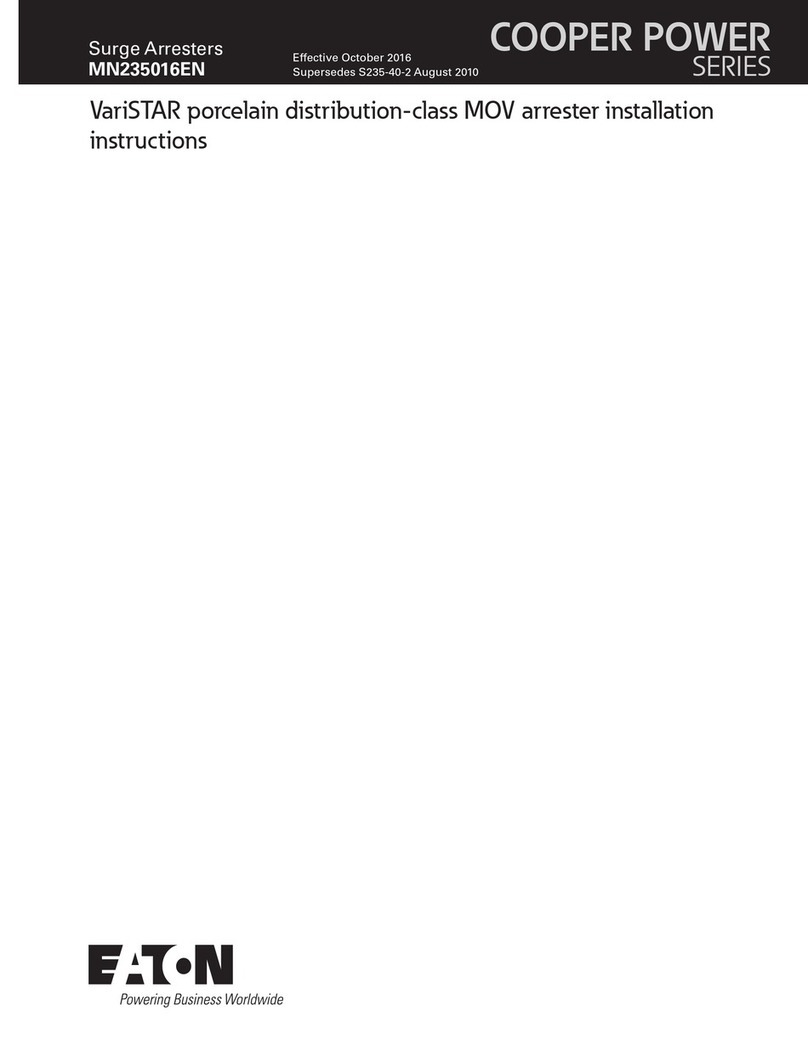
Eaton
Eaton COOPER POWER SERIES installation instructions
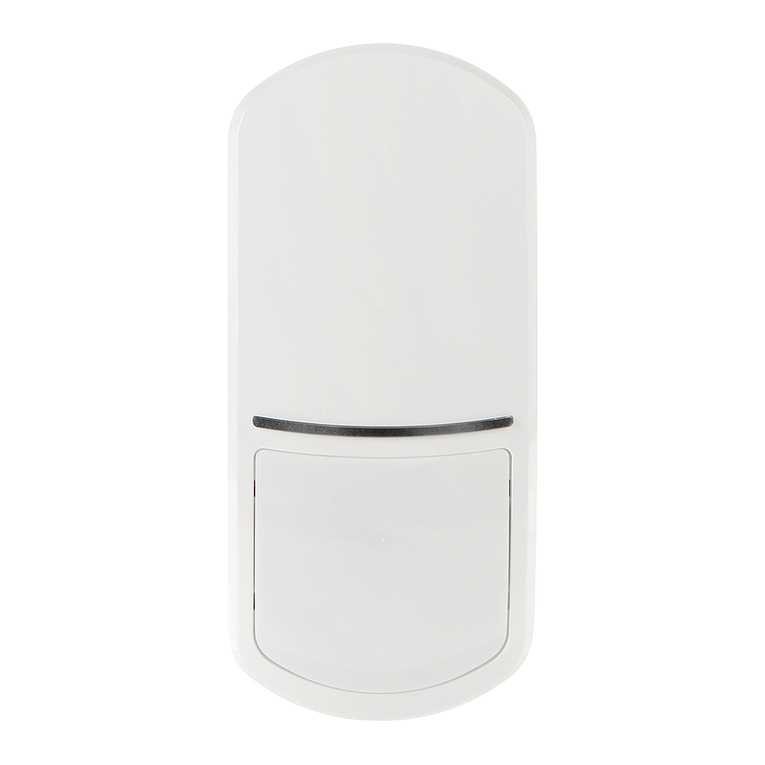
Satel
Satel SLIM-PIR-PET manual
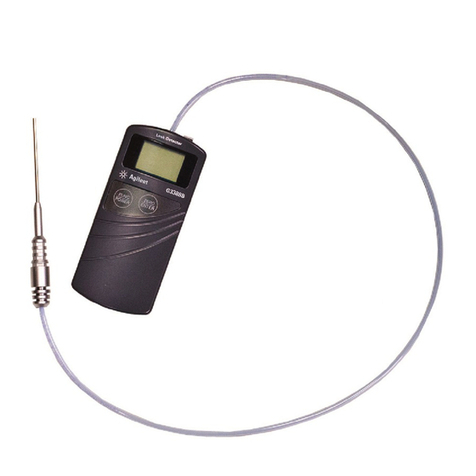
Agilent Technologies
Agilent Technologies G3388B Operation manuals
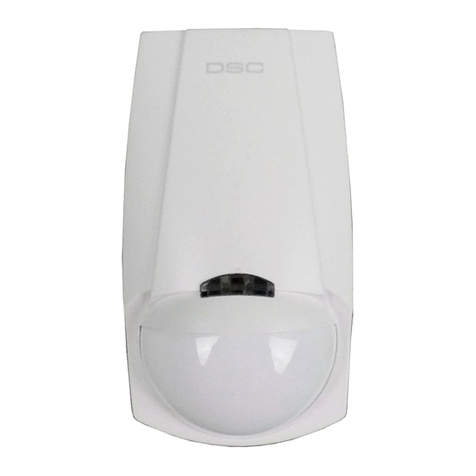
DSC
DSC LC-104PIMW installation instructions
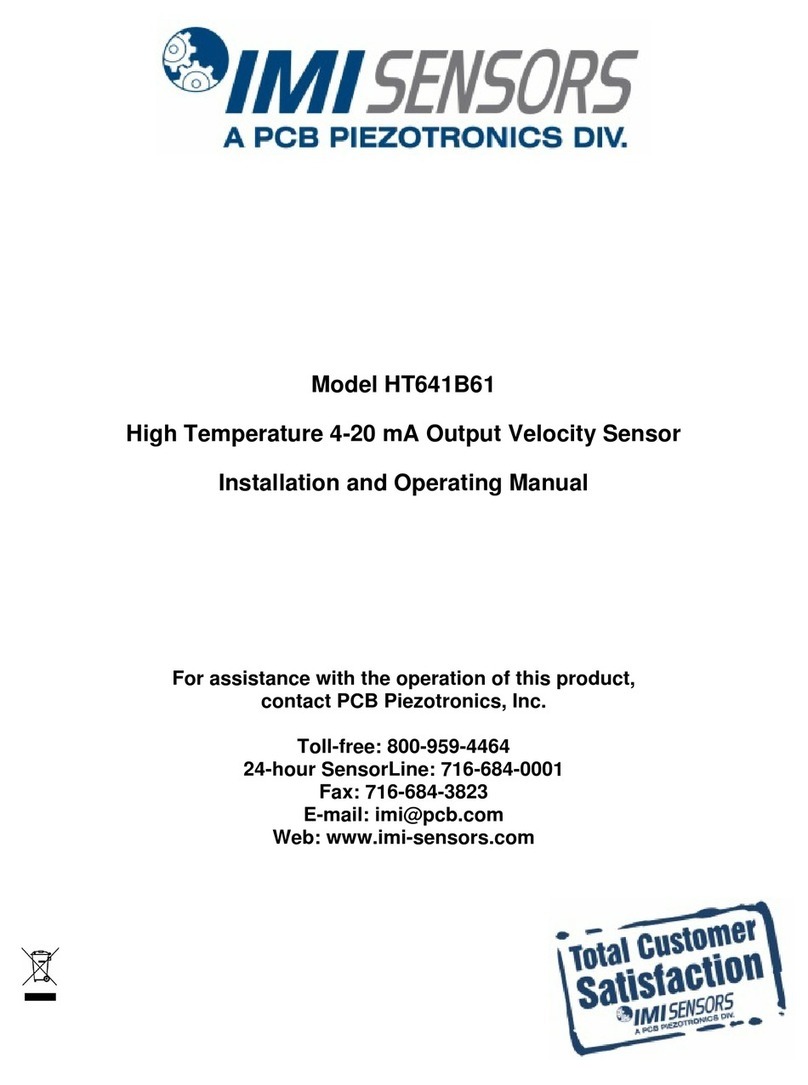
PCB Piezotronics
PCB Piezotronics IMI SENSORS HT641B61 Installation and operating manual
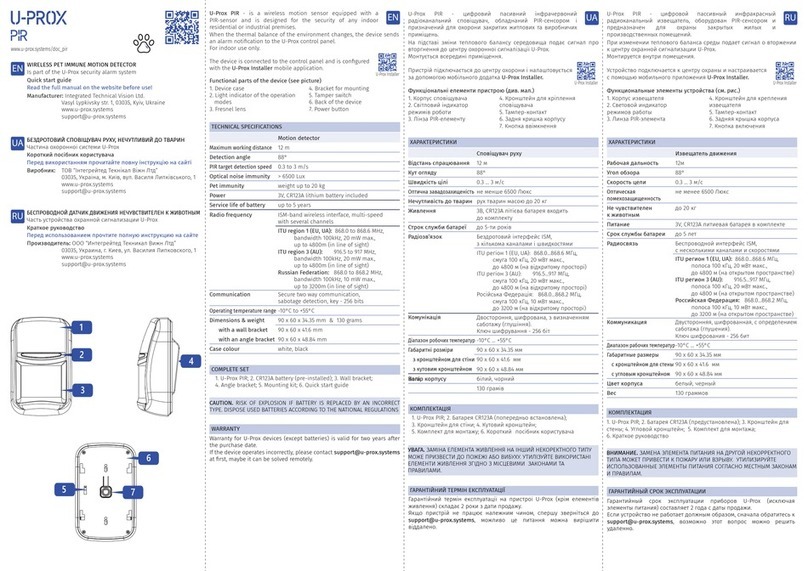
U-Prox
U-Prox PIR quick start guide
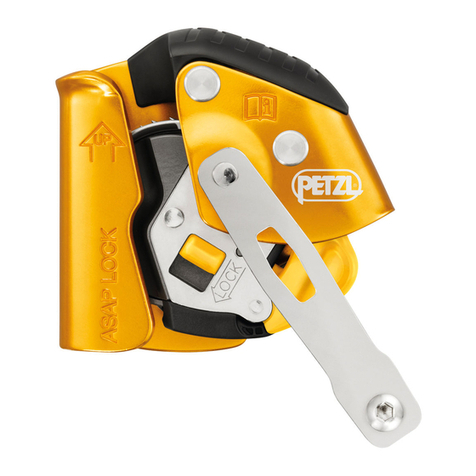
Petzl
Petzl ASAP LOCK TECHNICAL NOTICE
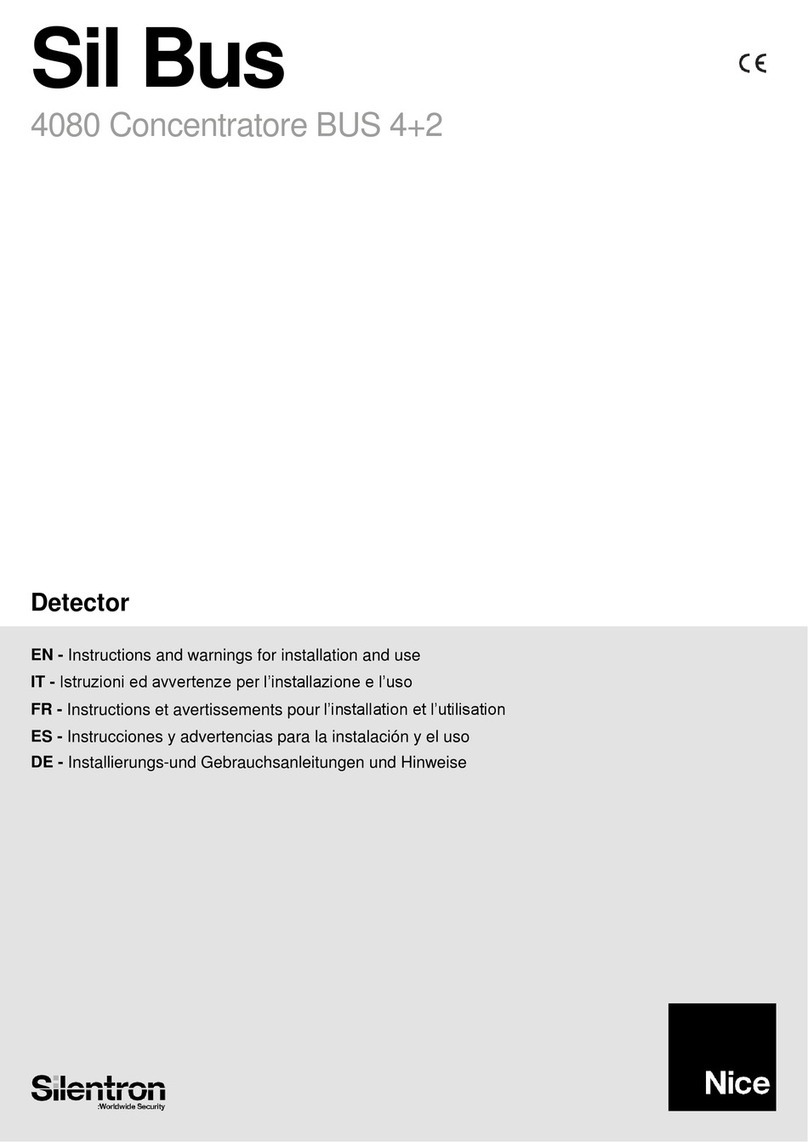
Nice
Nice Silentron Sil Bus 4080 Instructions and warnings for installation and use
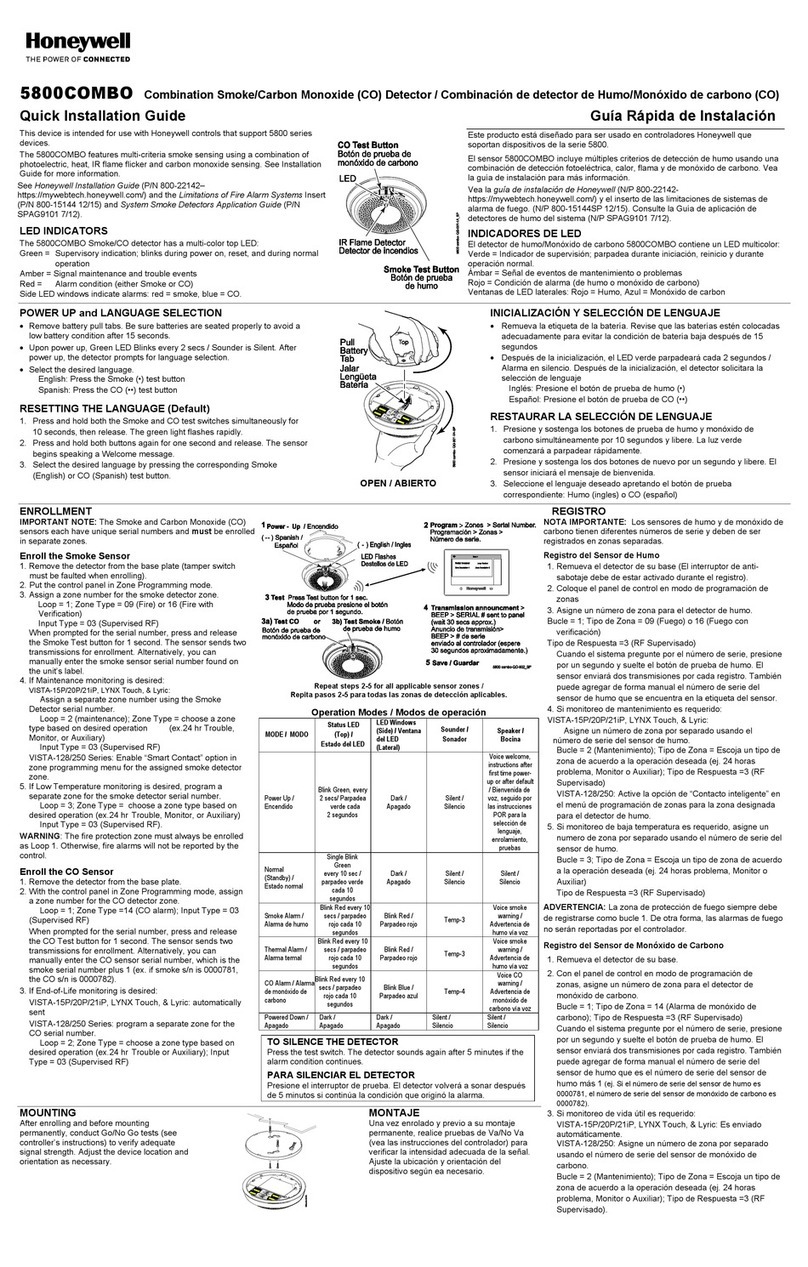
Honeywell
Honeywell 5800COMBO Quick installation guide
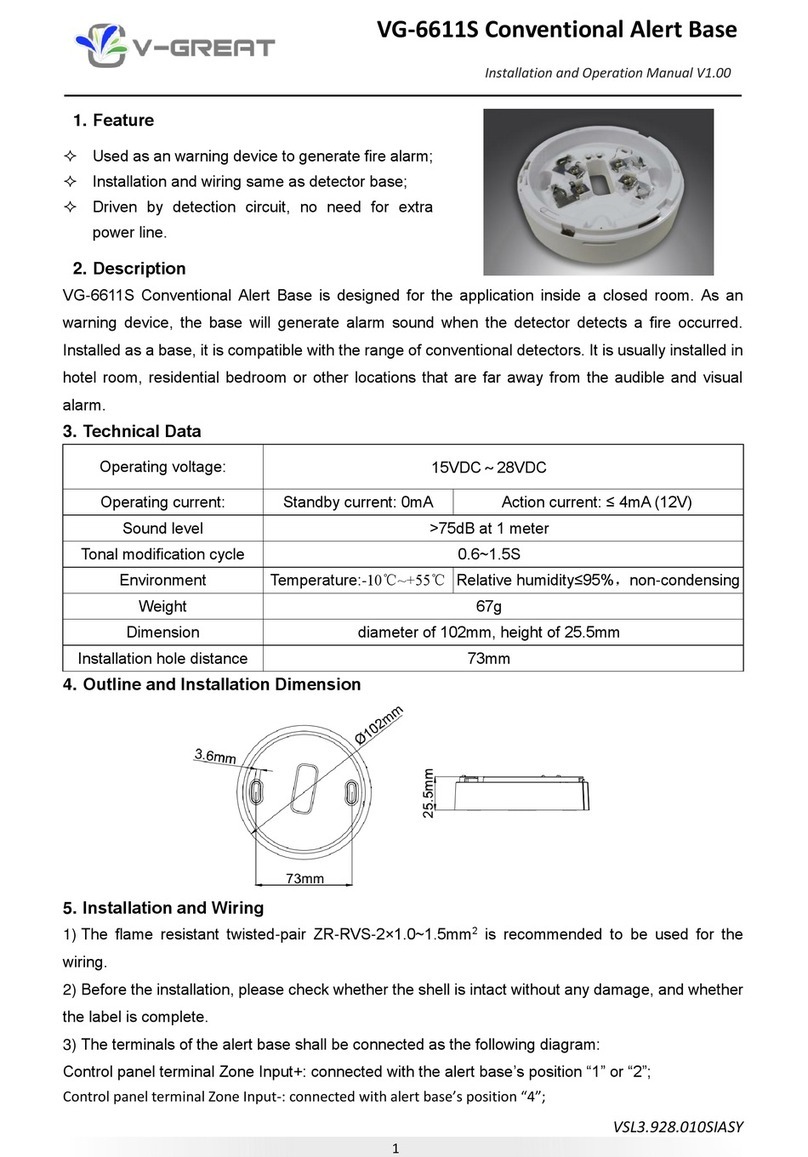
V-GREAT
V-GREAT VG-6611S Installation and operation manual
